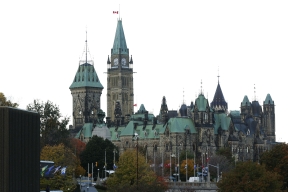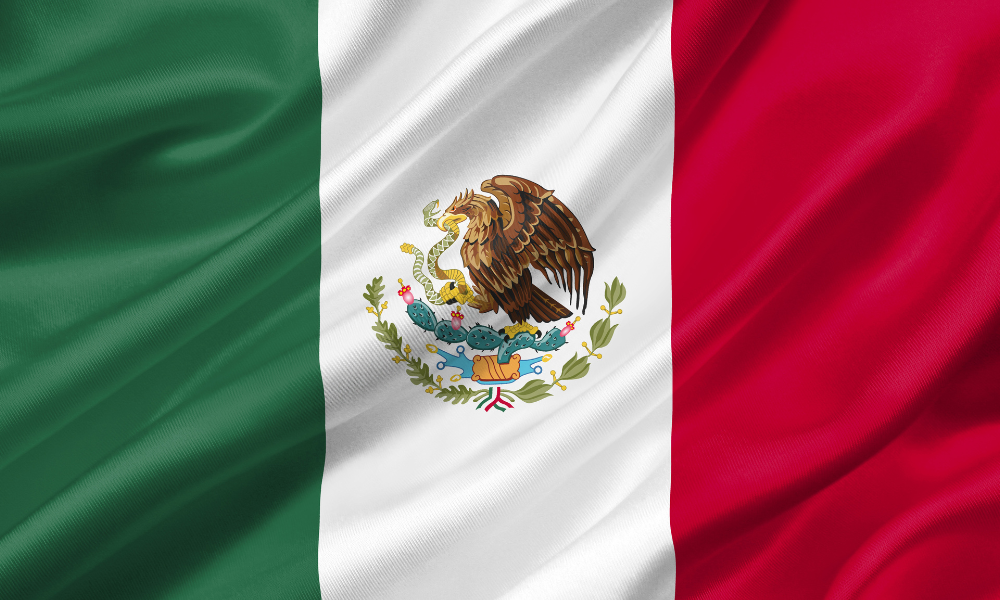Aboriginal entities in Canada could face cutbacks on federal transfer payments if their compensation from extractive projects are disclosed under the new federal transparency act, according to legal experts.
The concern is whether the federal government – armed with the knowledge of what Aboriginal entities are paid by extractive companies – may consider these project payments as a reason to reduce transfer payments to those entities accordingly.
It's a concern that has historically been brought up on a number of occasions, including in the former Parti Québécois' Bill 43. That Bill – an amendment to theMining Act – contained a provision that sought to make payments made by extractive companies to governments transparent. After Aboriginal protestations, the provision was subsequently toned down in Bill 70, which made agreements between a holder of mining leases or concessions and a community sent to the government private.
Now, the federal government has drafted its own transparency bill that looks to bring full disclosure back. The Extractive Sector Transparency Measures Act(ESTMA), tabled on October 23, is part of the government's anti-corruption effort by making public all payments over $100,000 made by extractive companies – the oil and gas and mining sectors – to governments. The legislation applies to any entity listed on a Canadian stock exchange and some private entities that meet two of the following criteria: it has at least $20 million in assets; it generated $40 million in revenue; and employs an average of at least 250 employees. Companies reporting on payments to Aboriginal entities will be granted a two-year delay.
Canada is the only country to require project payments to Aboriginal entities be made public, according to PricewaterhouseCoopers.
And while Aboriginal law practitioners say they understand the purpose of the bill for transparency and anti-corruption, they say disclosure of payments made to Aboriginal entities from extractive companies may raise fears of cuts from the federal government amid a sense that these entities are financially self-sufficient.
“I think that there is a legitimate concern that having 'own-source revenue' of this nature would lead to a claim by a government that the funding that the government is providing to the First Nations should be diminished in light of that,” says Maggie Wente, a partner at Olthuis Kleer Townshend LLP.
According to Aboriginal Affairs and Northern Development Canada, own-source revenue (OSR) is the revenue that is attained from sources such as taxes and income. Aboriginal governments are required to report revenues to Canada through an OSR report, and then the government will fill the gap between OSR capacity and the estimated cost of programs and services. Excluded revenues from OSR include claim settlements, program transfers from other governments, profits from the sale of treaty lands, compensation from an insurance or legal claim, and gifts or charitable donations.
Wente says payments received from extractive entities are considered settlement payment for “damage to their Aboriginal and treaty rights,” and other settlement payments of that variety are not reportable. She says her clients are concerned that these project payments may, in fact, become reportable.
These settlement payments are largely represented in what is called Impact and Benefit Agreements (IBA). An IBA is a contract between an extractive company and an Aboriginal government that outlines the impacts of a project, responsibilities of both parties, and how the community will put the proceeds of the contract toward employment and economic development.
“These payments that are under these IBAs are only starting to become lucrative revenue streams that are necessarily tied to the life of the project,” says Sandra Gogal, a partner at Miller Thomson LLP. “So they [First Nations] can start planning their economy...it is very new.” Gogal adds that Aboriginal communities would argue that these project payments are just supplementing what is required to become self-sufficient, and money from the government is not enough in any event.
According to Maxime Faille, a partner at Gowling Lafleur Henderson LLP, Impact and Benefit Agreements “have become a mainstay of the relationship between project proponents and Aboriginal communities over the last couple decades, and certainly that has ramped up and continues to ramp up in light of various court cases that have made clear that First Nation and other Aboriginal community participation is really an essential component of so much...particularly in the extractive sector.”
The government has said that it expects to increase OSR “offsets” as OSR is being phased-in to all agreements. But it also states that “any group with significant revenues will face a reduction in federal transfers as the Aboriginal governments will be expected to make a greater contribution towards its programs and services.”
“You need to get a lot of own-source revenue before the government starts cutting your funding,” says Nadir André, a partner at Borden Ladner Gervais LLP. “We're talking about First Nations with casinos; we're talking about First Nations with more than one IBA.”
To Bernd Christmas, a partner at Cassels, Brock & Blackwell LLP, since the devolution starting in 1971, governments have viewed payments to First Nations differently than how First Nations see the funding.
“Governments [over the years have been] trying to look into the books of First Nations for various reasons, usually under the guise that this is taxpayers' dollars and governments need to report to the taxpayer about where their money is spent,” Christmas says. He adds that First Nations view the funding as compensation for things they “gave up,” such as land and water being taken away from them.
This isn't just the second time financial transparency measures have been pressed against First Nations. In March 2013, the federal government passed the First Nations Financial Transparency Act, which required First Nation governments to publicly disclose remuneration and expenses of chiefs and councillors and audited consolidated financial statements.
“I think there is an increasing desire for the federal government to understand and know about the own-source revenue that the First Nations have and you can kind of see that in the Financial Transparency Act that concerns First Nations,” Wente says.
But all this is not to say that Aboriginal communities are uniform on where they stand on these reporting measures. André, after listening to First Nations and Aboriginal positions on Quebec's Bill 43, says there are mixed feelings.
“Some Aboriginal groups with no Impact Benefit Agreements would probably like to know how much money other Aboriginal groups receive because they are all competing for other sources of funding for economical development, for infrastructure, housing,” he says. “[Those] interested to enter into IBA negotiations would probably like to have those documents made public so they can establish benchmarks (i.e. market prices) when they're about to negotiate.
“But those who oppose the most are certainly those who have Impact Benefit Agreement payments.”
The concern is whether the federal government – armed with the knowledge of what Aboriginal entities are paid by extractive companies – may consider these project payments as a reason to reduce transfer payments to those entities accordingly.
It's a concern that has historically been brought up on a number of occasions, including in the former Parti Québécois' Bill 43. That Bill – an amendment to theMining Act – contained a provision that sought to make payments made by extractive companies to governments transparent. After Aboriginal protestations, the provision was subsequently toned down in Bill 70, which made agreements between a holder of mining leases or concessions and a community sent to the government private.
Now, the federal government has drafted its own transparency bill that looks to bring full disclosure back. The Extractive Sector Transparency Measures Act(ESTMA), tabled on October 23, is part of the government's anti-corruption effort by making public all payments over $100,000 made by extractive companies – the oil and gas and mining sectors – to governments. The legislation applies to any entity listed on a Canadian stock exchange and some private entities that meet two of the following criteria: it has at least $20 million in assets; it generated $40 million in revenue; and employs an average of at least 250 employees. Companies reporting on payments to Aboriginal entities will be granted a two-year delay.
Canada is the only country to require project payments to Aboriginal entities be made public, according to PricewaterhouseCoopers.
And while Aboriginal law practitioners say they understand the purpose of the bill for transparency and anti-corruption, they say disclosure of payments made to Aboriginal entities from extractive companies may raise fears of cuts from the federal government amid a sense that these entities are financially self-sufficient.
“I think that there is a legitimate concern that having 'own-source revenue' of this nature would lead to a claim by a government that the funding that the government is providing to the First Nations should be diminished in light of that,” says Maggie Wente, a partner at Olthuis Kleer Townshend LLP.
According to Aboriginal Affairs and Northern Development Canada, own-source revenue (OSR) is the revenue that is attained from sources such as taxes and income. Aboriginal governments are required to report revenues to Canada through an OSR report, and then the government will fill the gap between OSR capacity and the estimated cost of programs and services. Excluded revenues from OSR include claim settlements, program transfers from other governments, profits from the sale of treaty lands, compensation from an insurance or legal claim, and gifts or charitable donations.
Wente says payments received from extractive entities are considered settlement payment for “damage to their Aboriginal and treaty rights,” and other settlement payments of that variety are not reportable. She says her clients are concerned that these project payments may, in fact, become reportable.
These settlement payments are largely represented in what is called Impact and Benefit Agreements (IBA). An IBA is a contract between an extractive company and an Aboriginal government that outlines the impacts of a project, responsibilities of both parties, and how the community will put the proceeds of the contract toward employment and economic development.
“These payments that are under these IBAs are only starting to become lucrative revenue streams that are necessarily tied to the life of the project,” says Sandra Gogal, a partner at Miller Thomson LLP. “So they [First Nations] can start planning their economy...it is very new.” Gogal adds that Aboriginal communities would argue that these project payments are just supplementing what is required to become self-sufficient, and money from the government is not enough in any event.
According to Maxime Faille, a partner at Gowling Lafleur Henderson LLP, Impact and Benefit Agreements “have become a mainstay of the relationship between project proponents and Aboriginal communities over the last couple decades, and certainly that has ramped up and continues to ramp up in light of various court cases that have made clear that First Nation and other Aboriginal community participation is really an essential component of so much...particularly in the extractive sector.”
The government has said that it expects to increase OSR “offsets” as OSR is being phased-in to all agreements. But it also states that “any group with significant revenues will face a reduction in federal transfers as the Aboriginal governments will be expected to make a greater contribution towards its programs and services.”
“You need to get a lot of own-source revenue before the government starts cutting your funding,” says Nadir André, a partner at Borden Ladner Gervais LLP. “We're talking about First Nations with casinos; we're talking about First Nations with more than one IBA.”
To Bernd Christmas, a partner at Cassels, Brock & Blackwell LLP, since the devolution starting in 1971, governments have viewed payments to First Nations differently than how First Nations see the funding.
“Governments [over the years have been] trying to look into the books of First Nations for various reasons, usually under the guise that this is taxpayers' dollars and governments need to report to the taxpayer about where their money is spent,” Christmas says. He adds that First Nations view the funding as compensation for things they “gave up,” such as land and water being taken away from them.
This isn't just the second time financial transparency measures have been pressed against First Nations. In March 2013, the federal government passed the First Nations Financial Transparency Act, which required First Nation governments to publicly disclose remuneration and expenses of chiefs and councillors and audited consolidated financial statements.
“I think there is an increasing desire for the federal government to understand and know about the own-source revenue that the First Nations have and you can kind of see that in the Financial Transparency Act that concerns First Nations,” Wente says.
But all this is not to say that Aboriginal communities are uniform on where they stand on these reporting measures. André, after listening to First Nations and Aboriginal positions on Quebec's Bill 43, says there are mixed feelings.
“Some Aboriginal groups with no Impact Benefit Agreements would probably like to know how much money other Aboriginal groups receive because they are all competing for other sources of funding for economical development, for infrastructure, housing,” he says. “[Those] interested to enter into IBA negotiations would probably like to have those documents made public so they can establish benchmarks (i.e. market prices) when they're about to negotiate.
“But those who oppose the most are certainly those who have Impact Benefit Agreement payments.”





